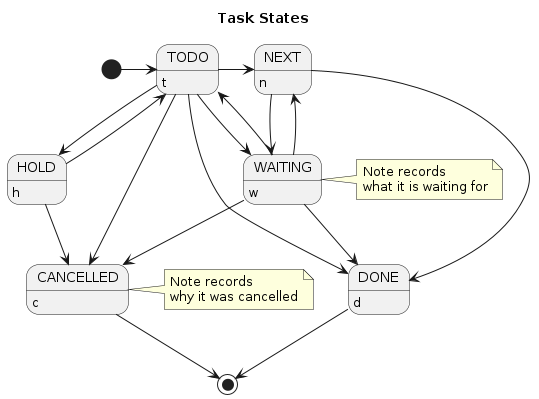Daily Shaarli
11/15/19
A comprehensive description of how I currently use org-mode.

SCION is the first clean-slate Internet architecture designed to provide route control, failure isolation, and explicit trust information for end-to-end communication. SCION organizes existing ASes into groups of independent routing planes, called isolation domains, which interconnect to provide global connectivity. Isolation domains provide natural isolation of routing failures and misconfigurations, give endpoints strong control for both inbound and outbound traffic, provide meaningful and enforceable trust, and enable scalable routing updates with high path freshness. As a result, the SCION architecture provides strong resilience and security properties as an intrinsic consequence of its design. Besides high security, SCION also provides a scalable routing infrastructure, and high efficiency for packet forwarding. As a path-based architecture, SCION end hosts learn about available network path segments, and combine them into end-to-end paths that are carried in packet headers. Thanks to embedded cryptographic mechanisms, path construction is constrained to the route policies of ISPs and receivers, offering path choice to all the parties: senders, receivers, and ISPs. This approach enables path-aware communication, an emerging trend in networking. These features also enable multi-path communication, which is an important approach for high availability, rapid failover in case of network failures, increased end-to-end bandwidth, dynamic traffic optimization, and resilience to DDoS attacks.
organice is an implementation of Org mode without the dependency of Emacs. It is built for mobile and desktop browsers and syncs with Dropbox, Google Drive and WebDAV.

During the writing phase of an academic paper, common tasks include downloading PDFs of publications and getting their references into your bibliography. However, I am not a fan of navigating the slow, bloated, tracker-filled, and distracting webpages of academic journals and publication aggregators. For some reason, many publishers decided that clicking the "Download PDF" link should redirect the user to an unusable in-browser PDF viewer instead of providing the PDF file directly. While the majority of journal webpages provide formatted citations for their publications, these are inconsistent in style and content.
I have always held that the act of programming is something that is done in an abstract realm and only later translated into a programming language. That programming should involve much more thinking than actual writing.
I mostly still stand by that but my years as a readability reviewer at Google raised my awareness of the fact that it takes time and practice to use a language well. Many were the hopeful C++ programmers who wrote fully functional and reasonably object-oriented code in Java but with a heavy C++ accent that couldn't quite meet the bar of elegance in Java (even if a C++ programmer might think it mostly elegant apart from the "flaws" of Java).
So how much does the choice of programmimg language matter? Is there or could there be a language that could be considered perfect?
Learn why "employees engagement" doesn't make sense anymore in today's world and how you should start talking about the context of the work to be done.
This article discusses GPT-2 and BERT models, as well using knowledge distillation to create highly accurate models with fewer parameters than their teachers